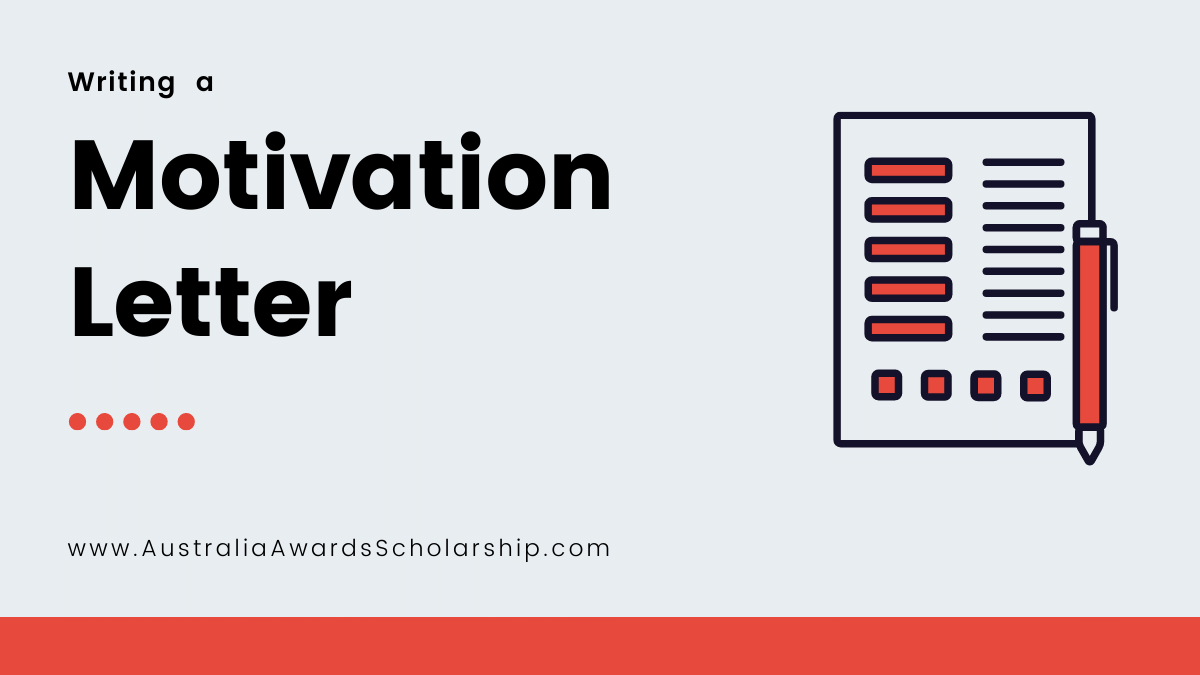Motivation Letter for Australia Awards Scholarships
Writing a Perfect Motivational Letter in 2021

Writing motivational letters, whether, for a job, university admission, or for a scholarship pose a challenge that can be difficult to overcome without any help. That is why you need to fully scroll through this guide where you will find everything there is to know about writing a perfect motivational letter.
Motivational Letter | What is it?
A motivational letter is a cover letter of sorts. You have to attach it with your resume. It is said that you only have 20 seconds to make your impression in a motivational letter. Those 20 seconds are the decisive moments within which the scholarship committee decides whether or not to look at your whole profile.
Motivational letters are often one page long unless advised otherwise by the university officials or management of the scholarship. They are meant to convince the scholarship jury why you should get the scholarship and what do you intend to do with the educational program that you want to get into.
Motivational letters are used to shortlist the number of applicants. The students who can make the best first impressions are further reviewed by the scholarship committees. So, with these letters, you have a huge chance of getting the scholarship of your dreams.
Things to Include in a Scholarship Motivation Letter:
Some of the things that you absolutely have to include in a motivational letter are as follows:
-
- Your name and contact info (so you can be reached)
- The name of the scholarship or the university that you are applying to along with its address.
- Date of dispatching
- Salutation like Dear Sir/Madam (If you know the name of the recipient, write their name in place of sir or madam. It adds a personal touch to the letter)
- The body of the letter
- Closings (like Sincerely, yours truly, etc.)
- Signature (with a pen, not computerized)
Letter of Motivation Writing Instructions
There are two ways to compose a motivational letter:
-
- You can divide the letter into three parts; the introductory part, the body of the letter, and the conclusion
- Or, you can divide the whole letter into seven paragraphs, with each paragraph having up to three sentences.
Both of these structures follow the three steps described below:
- Identify what a jury will expect from a Candidate:
You have to put yourself in the recruiter’s shoes and understand what they will be expecting from a scholarship recipient. Research the organization or the scholarship program you are applying to. Find out what they are looking for in a candidate. What kinds of problems they want to fix. Using this information you can be aware of how you need to showcase yourself.
- Volunteer the Solution they are Looking for:
Once you know the problem that they are facing, you have to convince them that you and only you can solve this problem. You have to articulate yourself as the perfect person to do the job. You can do so by telling them about your qualifications and career objectives, the focus of which must be the fact that they can gain a lot by hiring you and lose a lot by letting you go.
- Close the Letter:
By this point, you have made a strong case of yourself. You now need to close the letter with strong and confident words, like ‘I know deep inside that I can be an asset for you. I am looking forward to hearing back from you.
Motivation letters Writing for Australian Scholarships
- Give a Strong Introduction:
First impressions leave a lasting impression. Keeping this in mind, you have to craft your introductory part in a way that would leave the readers in awe. Talk about some of your achievements in the introduction as it would make the reader want to go on till the end.
- Show Professionalism:
While adding personal touches to the letter, you should not forget the fact that this is not a catch-up letter to an old friend. You have to sound professional in your tone and writing. This is a formal letter and needs to be treated like one.
- Do a thorough background Research:
Research about the core values, principles, vision, and mission statement of the institution you are applying to. What is their acceptance rate? What kind of pupils do they want? Incorporate some of that information into your motivational letter. It will make the recipients feel like you are serious about getting in and you have all the necessary data at hand.
- Advertise yourself:
This is what motivational letters are all about. List down all the things that differentiate you from others and that make you unique. Why should you be hired? Showcase yourself as a hard worker, fast learner, positive and ambitious person. If you have done some community work, don’t forget to talk about that as well.
- Outline beforehand:
Follow an outline that you have to make beforehand. This outline involves the answers to some important questions like, why do you want to join this university, why should you get hired, what makes you unique, etc.
- Proofread the Letter before Posting:
I cannot stress the importance of proofreading enough. Get a friend, colleague, or a teacher of yours to proofread the letter. Motivational letters need to be proofread by someone who hasn’t written the letter. They will be able to point out those mistakes that may have been overlooked by you.
- Keep trying:
It is highly unlikely that your first draft will be perfect. You may need several of them to craft a perfect motivational letter. Use universally acceptable fonts like Calibri, Ariel, etc. Keep the font size 12. And, keep the letter confined to one page.